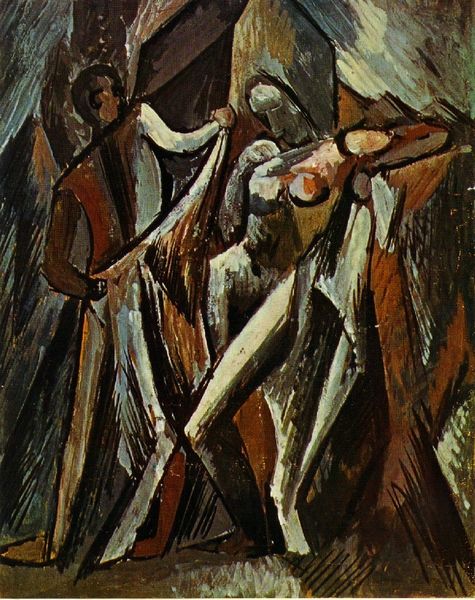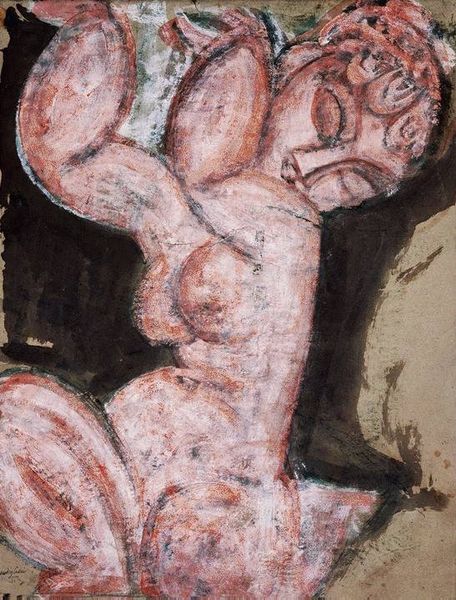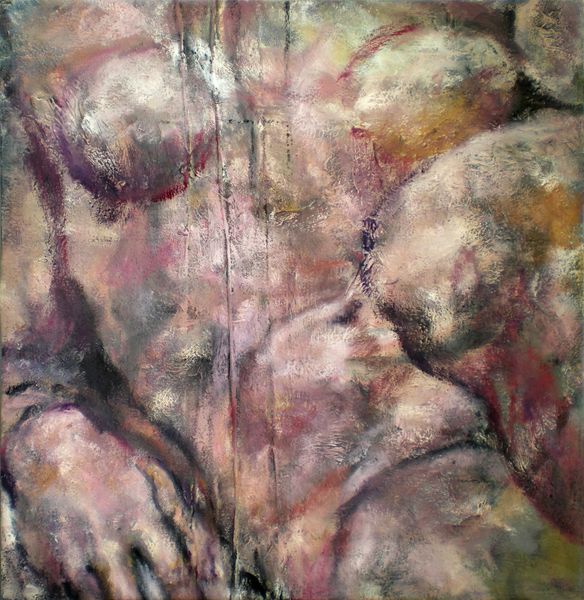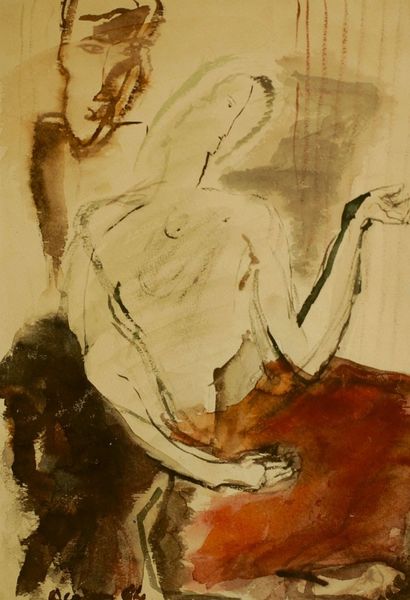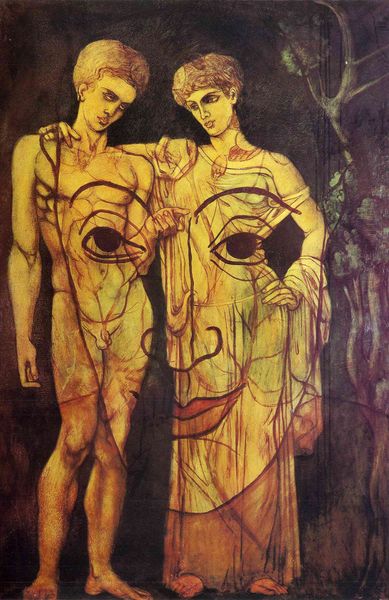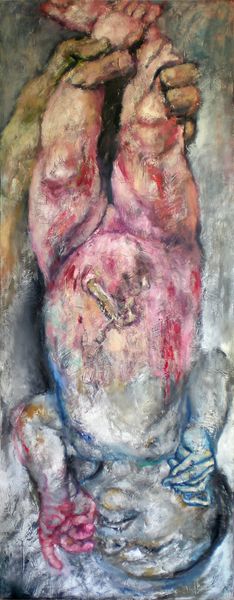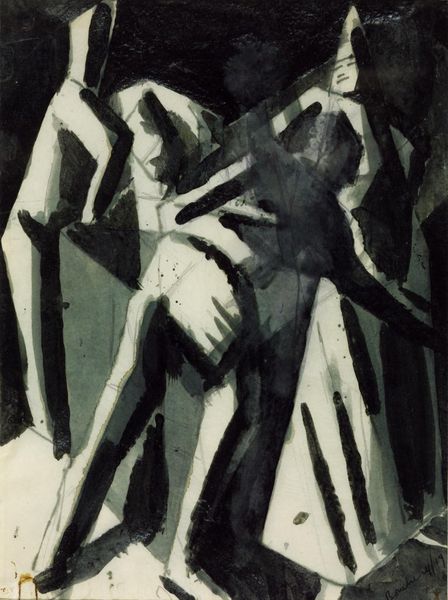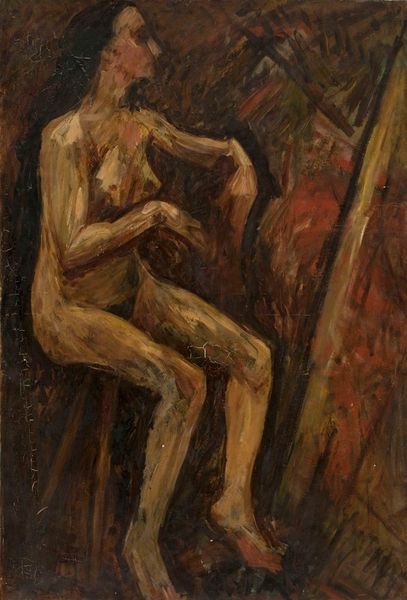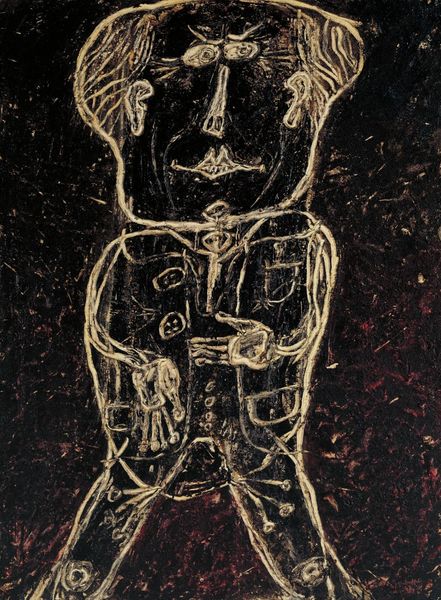
Copyright: Carmen Delaco,Fair Use
Curator: My gut reaction is... vulnerability. There's this rawness to it, a fragile kind of strength, or maybe a strong kind of fragility. Editor: And it's an evocative portrayal of humanity isn’t it? What we’re looking at is "Children With no Name II," an oil painting from 2008 by Carmen Delaco. Its expressive style makes great use of impasto—those thick, almost sculptural layers of paint. Curator: Impasto, yeah, that's it! It’s like the artist carved emotion directly into the canvas. The texture is wild! Almost like geological strata...or exposed nerve endings. Editor: The figure, rendered in these fleshy, turbulent tones, reminds us of our shared humanity and the very real physical and emotional challenges we all confront. The artist's emphasis on anonymity in the title adds another layer of interpretation to this figuration, suggesting that suffering and vulnerability are universally shared experiences that transcend cultural or social specificities. Curator: Shared... but also intensely personal, right? I feel this incredible loneliness emanating from the figure. The title points to a lost innocence, perhaps? It really tugs at the heartstrings. Like a collective primal wound laid bare. Editor: Perhaps that resonates with Delaco’s body of work. Considering abstract expressionism as an approach that explores identity formation, we can reflect on how broader social and political issues surrounding marginalization, alienation, and precarity influence a deeper understanding of what is happening in our communities. The figure almost appears lost. Curator: Absolutely. Lost in a world, or perhaps within itself? I keep circling back to the impasto – you could almost build a shelter with those textures, yet they convey such fragility. It's a brilliant paradox, isn’t it? Editor: It does reveal a depth that draws us into questions about societal well-being. A powerful work that connects with concerns about inclusion and protection in community with abstract but visceral potency. Curator: I find myself humbled and strangely comforted, despite the sadness. Art, at its best, transforms suffering into something resonant, something shared. Editor: Indeed. It’s an invitation to expand awareness about who and how we care, as both individual viewers and collectively.
Comments
No comments
Be the first to comment and join the conversation on the ultimate creative platform.
